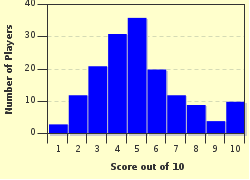Quiz Answer Key and Fun Facts
1. The Spanish were the first Europeans to explore North and South America and the first to create a permanent settlement. Who were the first European cooks in North America?
2. The Spanish are credited with introducing many food items and influences to the North American diet. Which three items below would have been introduced by the Church in particular?
3. The early Spanish settlers are also credited with introducing many of the food items that have grown into major commercial products of the modern American agricultural industry. Which one below does not fit that category?
4. Something the Spanish did, as well as bring in their own food items, was to bring with them, food finds they had made in other cultures. Which item below is NOT a food the Spanish discovered and brought with them from South and Central America?
5. Which food listed below was considered poison when first taken back to Europe by the Spaniards after introducing it into the American diet?
6. Which food item listed below does NOT belong in the early Spanish American recipe for Stacked Enchiladas?
7. What is Posole?
8. What is Panocha?
9. What readily available meat "on the hoof" did the Spanish find running wild in what is now northern Mexico, South Texas and New Mexico that they were unfamiliar with?
10. One of the most beloved and recognizable food items introduced by the Spanish, courtesy of the Indians of South and Central America, to the North America diet is the tortilla. What is a traditional Tortilla made of?
Source: Author
rwminix
This quiz was reviewed by FunTrivia editor
Bruyere before going online.
Any errors found in FunTrivia content are routinely corrected through our feedback system.

